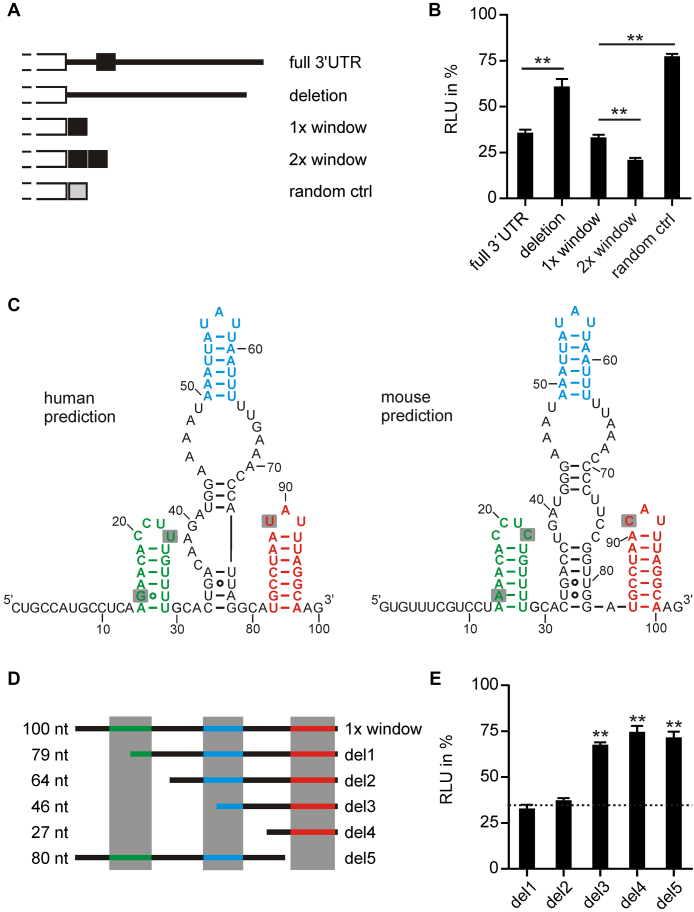Figure 1.
The 100 nt long structurally conserved region in the 3′UTR of UCP3 codes for a repressive element. (A) Overview of luciferase reporter constructs. Different fragments of the UCP3 3′UTR were fused to firefly luciferase. (B) Luciferase activity of UCP3 3′UTR fusion constructs shown in (A). Firefly luciferase activity was normalized to Renilla luciferase as internal transfection control. Values are normalized to an empty vector control, without UCP3 3′UTR sequences. n = 3. (C) Secondary structure prediction by Dynalign of the structurally conserved regions in the human and mouse UCP3 3′UTRs. (E) Overview of truncations of the 100 nt long window. (D) Luciferase activity of UCP3 truncation constructs shown in (E). Firefly luciferase activity was normalized to Renilla luciferase as internal transfection control. Values are normalized to an empty vector control, without UCP3 3′UTR sequences. Luciferase activity of the 100 nt window is indicated as dashed line. n = 3. (**) P-value < 0.01.

